Wasabi or wasabi japonica is Japanese horseradish and belongs to the family of Brassicaceae. However, there are regarded as the toughest plant to grow. Here, in this article, I have tried to explain how you can grow wasabi easily with a minimum effort.
Growing wasabi in your backyard can be troublesome. It does not grow in an unsuitable climate. Moreover, it is susceptive to disease and takes almost two years to become mature.
However, people are crazy about growing wasabi. In fact, we got mails from our subscribers at regular intervals. That’s why we have decided to write this guide.
What is Wasabi and Why you should consider growing Wasabi?
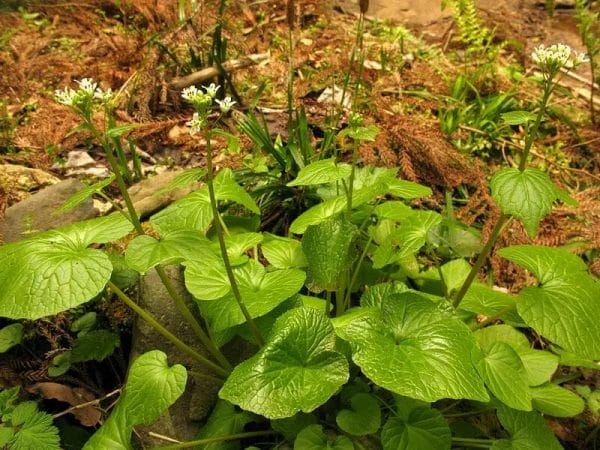
As we already know this plant belongs to the Brassicaceae or Cruciferae plant family. Another commonly known plant from this family is the mustard plant, IE: dwarf shrubs.
Growing wasabi is profitable because they are highly-priced. So, growing this is profitable like growing lavender.
A paste is being prepared from the rhizomes on the ground and is being plucked. It is made out of these wasabi rhizomes that are generally used in many of the Japanese home-or restaurants made dishes such as sushi and other food items. The uniqueness of wasabi lies in its strong and spicy taste that it emits when used in any dish.
Why should you grow your Wasabi?
- The freshly grated wasabi is highly favored by chefs in top hotels which means you can sell your homegrown wasabi at a relatively grand price to all the top -end hotels and make a business out of it.
- Another reason that you may consider that the homegrown wasabi is relatively fresher compared to the store-bought wasabi. Therefore this wasabi when crushed releases the same chemicals from its stem that gives a more refreshing flavor than the store-bought Wasabi.
Health Benefits of Wasabi
Some of the physical advantages that you may enjoy if you have Wasabi regularly ;
- It works towards eliminating any chances for the cancer cells to grow in your body ever.
- This also works on making your heart healthy enough so that the chances of encountering any cardiovascular or coronary diseases becomes close to the null value.
- Many may suffer from joint pain that may occur due to various reasons, so having wasabi paste added on to your food can help you or your loved ones treat arthritis.
- Wasabi acts as an antibacterial medication in food, which is why the food remains bacteria-free when you add wasabi into it in any form.,of course.
- It improves the condition of the gut when you consume it.
You can also read:
How to Grow Wasabi
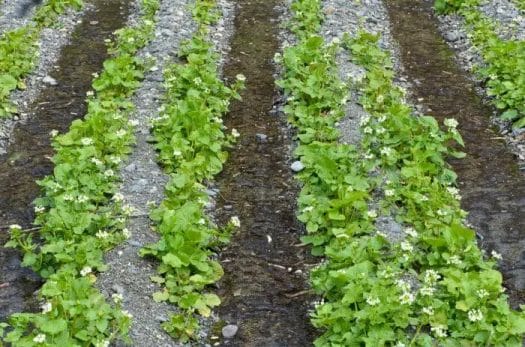
Wasabi is very selective about the environment. If the environment is ok for growing, then you can follow this guide. I will try to make it easily understandable. Let’s begin.
As an introduction, there are about 2 varieties that you can choose from to grow in your backyard or pots. However, you can only grow two types of Wasabi plants from the seeds which are the Duruma and Mazuma.
The other types of seeds that you can choose to grow are the Takai, Shimane, Sanapo, Izawa, Daruma, Medaka and Hangen.
The best option to grow the wasabi plant is to set up a small irrigation project. Be sure not to soak the soil as this may lead to the growth of fungus or root rot that can rapidly escalate across the other plants
Growing environment:
It will not grow well if it doesn’t get the right temperature, humidity and water content A full wasabi plant grows into a full plant within two years. It can develop into a full plant in very soggy circumstances. Also, it is important to make sure that the plants have the best nutritious soil for growth.
- The ideal temperature for this plant is between 45 to 70-degree Fahrenheit.
- The drawback of growing this plant is that it cannot take in the large variations in temperatures well.
- It is possible to grow the plants alternatively without having to build a greenhouse or green room.
- Nevertheless, the condition for such an arrangement should be that the temperature should be stable throughout the day and it must not fluctuate rapidly at all.
- Measure the pH of the soil using the PH meter and make sure that it is balanced between 6 and 7.
Creating a Shade:
Select an area that has a proper shelter facility: The place should not get direct sunlight because they generally grow on the forest floors in the wild. For this, it is best to plant them under the trees so that they do not get too much of the sunlight.
Preparing The soil:
You can use the roto-tiller or shovel to plow up the soil patch. Do the plowing to almost 25 cm deep. Then, add compost (organic/fertilizer, compost) into the soil. It will make the soil healthy and rich enough for the wasabi plants to spring up graciously from their seeds.
Planting the Wasabi Seeds
Before, planting you have to make sure the soil is fertile, and create shade to protect it from the direct sunlight.
Where to find wasabi seeds?
Planting Seeds:
- Plant the wasabi seeds within two days of obtaining them.
- Dip them into the water for a considerable amount of time before planting them into the soil.
- Make sure you sow the seeds at least two or three inches away from each other.
- Once the soil is well-drained, apply the fertilizer immediately. Plant or order the wasabi seeds around the fall season.
If you plant the wasabi seeds during the winter is also not a bad thing.
Tips for Planting Wasabi In Winter
Doing so, you will be giving them enough time to strengthen their roots. Of course, do not plant them immediately after you receive them.wait for at least two days before you proceed with the plantation process.
- Make sure to soak the seeds beforehand for several hours(best would be at night before you go to sleep).
- Place one seed per hole and make sure to backfill the holes.
- The seeds must be watered freely until the soil is piled up with the water. As wasabi is a semi-aquatic plant, therefore it is a must to keep the plant moist all year round.
- Besides, make sure to water the wasabi plants in the right amount.
This is because if you apply too much water to the plants then their roots will eventually rot and damage the plant -on the other hand, if you do not water the plant properly it will dry out and eventually die.
Planting Wasabi Seeds in the Pot
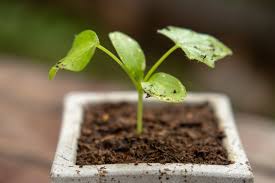
If you are planting the wasabi seeds in a pot.
- Make sure that the pot has a dimension of at least 30 cm in depth and width.
- Also, the seedling in a pot must be placed about 10 cm apart from each other.
- Another point to consider here is to try out a mixture of normal potting soil, vermiculite, and perlite.
Tools or Equipment You Will Need to Grow the Wasabi
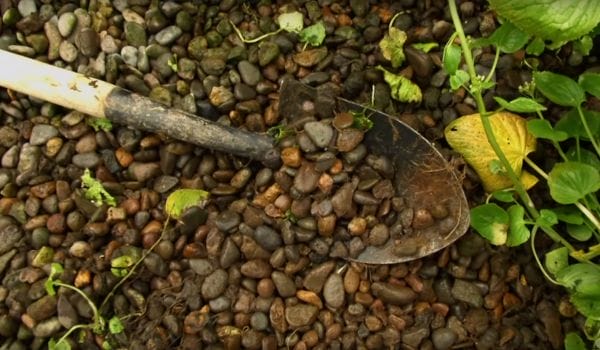
You may have liked the taste of wasabi paste that you have distinguished from the bowl of sushi you may have had at a restaurant a few days ago. Now you have hit up with a plan to grow these plants at home so that you can use the grow the homegrown wasabi to prepare the paste that you will add while cooking any of your dishes. So the first thing you must know is the materials you will need to get on the quest.
- Greenhouse or any enclosed space to grow the plant.
- Tarp
- Sulfur rich fertilizer
- Distilled Water
- Wasabi Seeds
- Roto-Tiller & Shovel
Growing and Caring Tips for the Wasabi Plant
If presented to too much moisture or humidity, it would die; Also the incorrect nutrient planning could lead to a similar fate.
- Apply Fertilizer: Fertilize the plants as per the instructions provided in the fertilizer bag. The insemination can be done once every year. It is important to keep the pH of the soil between 6 and 7. Therefore fertilize the soil accordingly so that the pH does not rise or drop at any cost.
- Removing Weeds is Important: Remove the weeds after a certain period and regularly. This is because your soil is very rich, which is the perfect spot for weed regeneration and will damage the growing environment for the Wasabi plant.
- Winter Care: Wasabi in the rhizomes can survive temperatures as low as -5 degrees celsius. Even after this, you can place a thick cloth or a small blanket over the wasabi plant to protect it from the extreme cold.
- Don’t lose hope: We understand that carting plants for the whole two years are boring. Don’t drop confidence! Take care of the Wasabi plant carefully for two years. Because this is how long it takes for the wasabi plant to mature into a whole plant.
Advance Caring for the Wasabi Plant
Once you plant a Wasabi seedling, you do not need to care much about it except the weather and soil conditions of course as mentioned earlier above. Also, pests or insects will not disturb the plat too much either. Although aphids can be seen very rarely, also like the mildew, they will not damage more than just a few leaves.
- If the wasabi plant has grown up. Try to keep the soil as damp as possible and cover the ground with a top dressing of compost/manure. Wasabi thrives well in the summers as the conditions are perfect for its growth.
- And, if you see that the leaves are turning yellow, make sure to grow a taller plant beside the wasabi plant or as a quicker approach, place a piece of shade cloth over the wasabi plant as it will be growing well in the shady conditions as compared to growing it under full sunlight.
To take care of the wasabi root do the following:
- Shred off any wilted leaves or stems on the plants,
- Uproot the weeds that can grow around the plant and regularly check out for pests such as snails or slugs and remove them accordingly.
- Apply a release of 12-12-12 fertilizers after every quarter of the year. Using fertilIzers containing high rates of sulfur increases the flavor and spiciness.
How and When to Harvest Wasabi?
The size of the plants will be almost close to two feet tall and almost two feet wide after it has completely grown.
The wasabi plants do grow in full size by the summer that can be distinguished by the large heart-shaped leaves and its tall structure does make other plants around it scuffle for light.
The leaves do live on for the next six months until the winter season and the plant’s materials do travel downwards into the rhizomes located beyond the ground where it is conserved.
Harvesting the Wasabi Plant
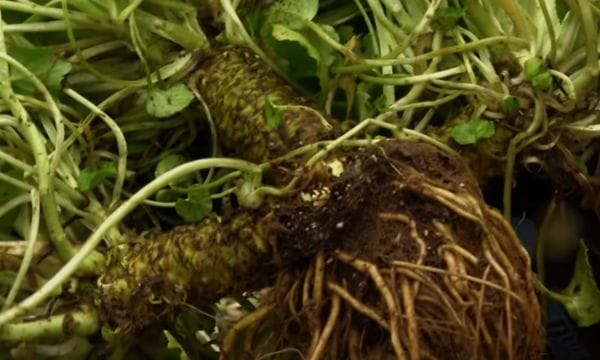
First and foremost, dig up the rhizomes to make sure that the plant is ready for harvest. Be extra careful while digging up the rhizomes and make sure not to cut them out while digging them. Place the seeds at a considerable distance from each other(approximately 330 cm from each other).
Other precautions you can take before harvesting the seeds are as follows:
- Do not remove the plants yourself. The plants will self-seed themselves and you may not need to burn your pockets by purchasing more seeds.
- Keep the rhizomes neat and clean and also remove the leaves
- Preserve the rhizomes in a very cold area-can be your freezer or refrigerator for later use.
- Don’t cut the rhizomes before it is time as it may cause them to lose its aroma.
- You can reuse the rhizomes by storing them in a freezing spot or drying them out and making a paste out of them to store them for a longer period.
What are these, where the plant materials are stored?
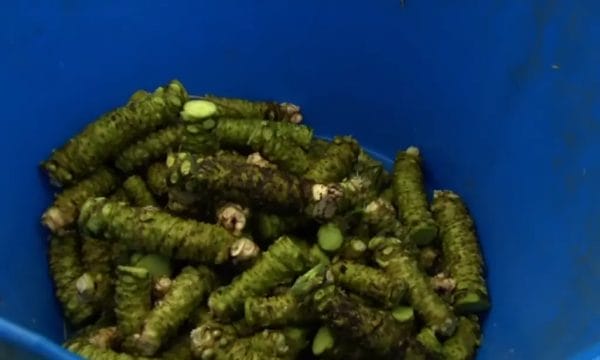
These are swollen stems that can all the essentials so that the plant can survive the harsh winter season and regrow again during the spring season.
You can consume the leaves and stems that you can put into any dish to spice it up. The white flowers that appear during the spring season on the stems can be used as fragrant as well as consumable raw or fried.
General FAQ and Facts About Wasabi Farming
How to make the paste from the Wasabi Plant?
Answer: Now that the Wasabi Plant has grown completely and is ready to use, you may want to know how to use the plant to make the paste from it.
Use it as a finger grater to mince the wasabi root. Place the grated wasabi to a mortar to slice it off further and eventually prepare a smooth creamy paste.
How long can it take for the wasabi plant seeds to germinate?
Answer: Approximately 15 to 20 days
Can wasabi be grown using hydroponic techniques?
Answer: Yes and many who are producing the plant commercially are using this method.
How long can it take to grow the wasabi Plant hydroponically?
Answer: Approximately 18 months
What to do when you see dark spots on the Wasabi leaves?
Answer: This generally happens due to the frost and you can cure this by moving the plant to somewhere warm and shady or a greenhouse where you can regulate its temperature.As it is hard for the wasabi to tolerate the frost or cold weather it is best to plant it inside the house if you do not have a greenhouse.
Conclusion
As this plant is very sensitive about the weather, and environment you should always take good care of them. Moreover, for large scale growing, the greenhouse is suggested.
If you follow this guide, you can grow wasabi successfully. However, if you feel any difficulties, write a comment below, we will try our best to help you.
